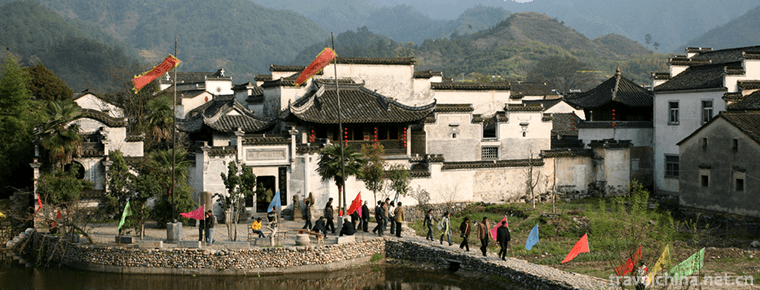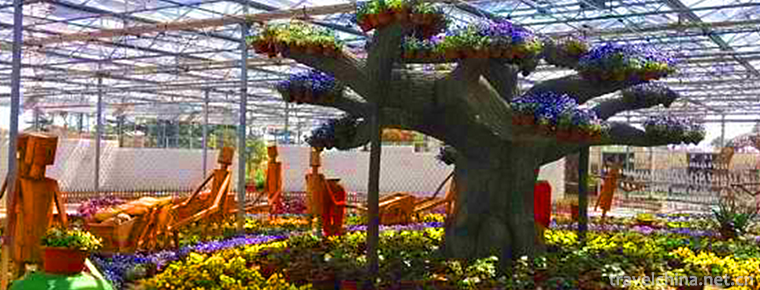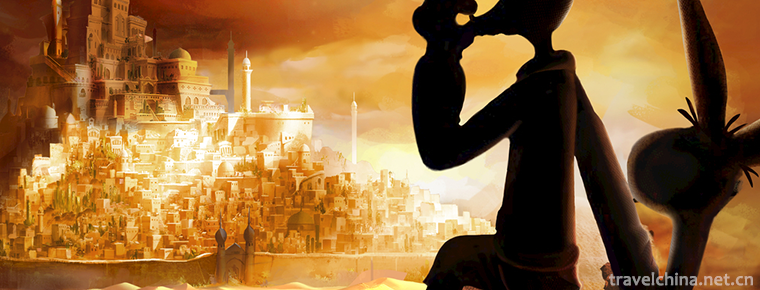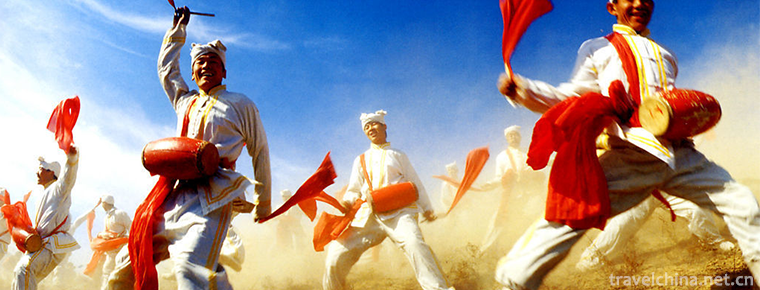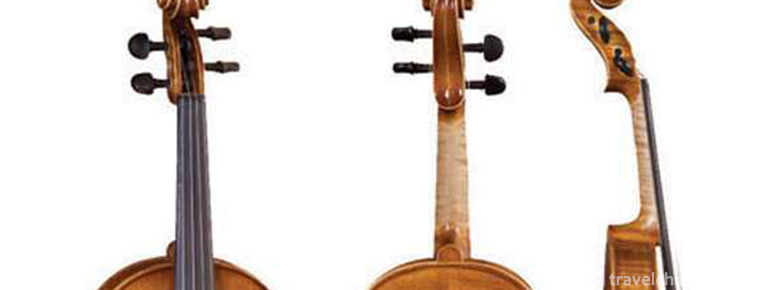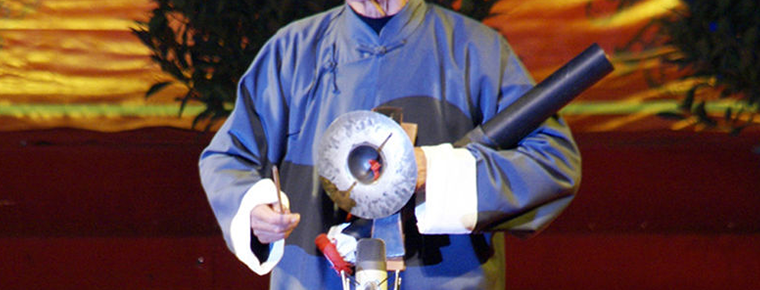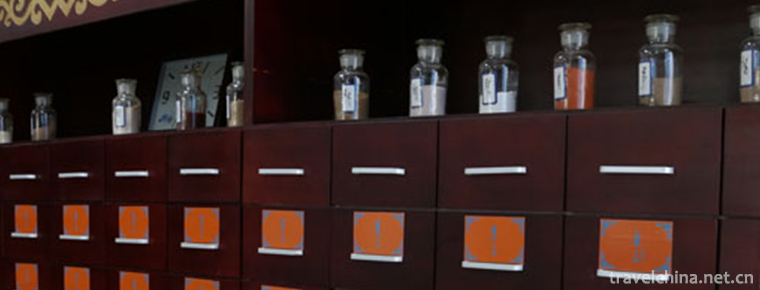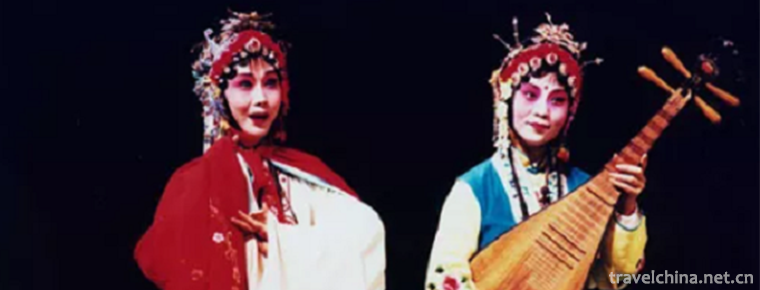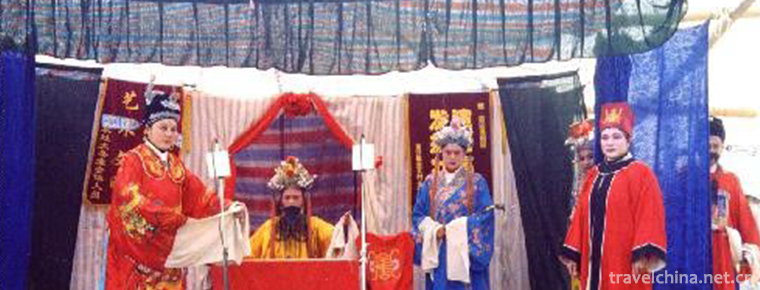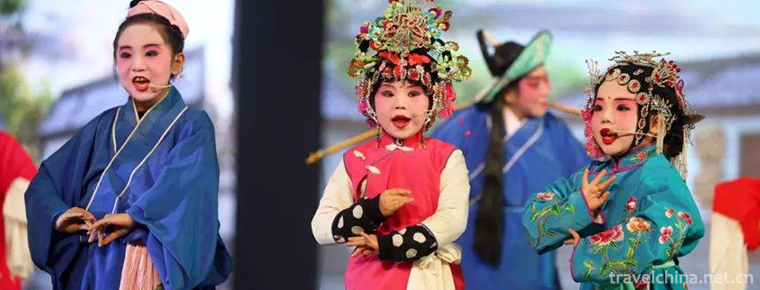Bian Que Temple Tourist Area
Bian Que Temple, also known as Bian Que Temple, is situated at the foot of Que Mountain, 26 kilometers west of Neiqiu County Town. It is an ancient building group to worship and worship the Chinese medical ancestor Bian Que. There are 27 original monolithic buildings, including 13 rebirth bridges, mountain gates, Bian Que Hall, Hou Tu General Hall and Jade Emperor Hall, covering an area of 150,000 square meters, which is the largest and oldest Bian Que Temple group in China. In 2003, it was appraised as A-level tourist area by the State Tourism Administration, and in 2006 it was declared as a national key cultural relics protection unit by the State Council.
Bian Que Temple, also known as Bian Que Temple, is situated at the foot of Que Mountain, 26 kilometers west of Neiqiu County Town. It is an ancient building group to worship and worship the Chinese medical ancestor Bian Que. There are 27 original monolithic buildings, including 13 rebirth bridges, mountain gates, Bian Que Hall, Hou Tu General Hall and Jade Emperor Hall, covering an area of 150,000 square meters, which is the largest and oldest Bian Que Temple group in China. In 2003, it was appraised as A-level tourist area by the State Tourism Administration, and in 2006 it was declared as a national key cultural relics protection unit by the State Council.
Bian Que Temple was built ominously in the Han and Tang Dynasties. It has been repaired in successive dynasties. Among them, Bian Que Temple, Bian Que Tomb, Tou Ling Stele, Huisheng Bridge, Jiulongbai, Ancient Stele Gallery, Sanqing Palace and Han Dynasty are magnificent and magnificent, which are the eight landscapes of Bian Que Temple and have rich historical and cultural connotations. The ancient cypress in the temple is towering, the buildings are scattered, and the tablets are lined up. It is an important material material for studying the traditional Chinese medicine culture of Bian Que and the history of Chinese medicine development. Bian Que Temple echoes and merges with Que Mountain. Its cultural accumulation is deep, leaving many popular legends.
The date of its establishment is unknown. The Records of Neiqiu County in the Ming Dynasty recorded that it was rebuilt in the 22nd year of Jiajing in the Ming Dynasty (1543 A.D.). The old bridge was washed down in the catastrophic floods of 1963 and rebuilt on its original site in 1999. The reason why it came back to life is mainly to describe the medical skill of Bian Que. Because in ancient times, people thought that no matter how many illnesses they suffered, as long as they walked across the bridge to Bian Que's residence, they would have the hope of resurrection. Legend has it that the first one on this bridge can dispel diseases and eliminate disasters, strengthen the body; the second one can prolong life and live for a hundred years; the third one can be light in body and mind, drifting to immortality.
Growing on the riverside hills south of Huishengqiao and rooted in the cracks between the rocks, nine ancient cypresses, which are integrated with the rocks, have a history of more than 2000 years and belong to Hanbai. Legend has it that after the murder of Bian Que, several of his disciples continued to travel around the world to practise medicine, and their remains were transported back and buried in this place. Later, nine cypress trees grew here to guard the master's mausoleum. Jiulong Shibai is a collection of three wonders: age, quantity and habitat. It is also very rare in China.
Fengbai, also known as Fanmei Bai, also belongs to Hamburg and grows on the hilltop southeast of Huishengqiao. Legend has it that she was the incarnation of Bian Que's disciple's sister-in-law, because men and women could not be buried together at that time and buried on the opposite hill, ushered in people who came to worship Bian Que.
The Monument to the Deity of Touling was set up from Yuan Dynasty to the fifth year of Yuan Dynasty (1268 A.D.). Blue stone, 2.8 meters high, 0.94 meters wide, 0.3 meters thick, solitary stele head, relief six dragons, rectangular stele forehead, turtle seat, stele inscription regular script, 30 lines, 1025 words. The first half of the inscription depicts Bian Que practicing medicine and rebuilding Bian Que Temple in past dynasties. In the second half, the story of Yan Tianyi and his descendants rebuilding Bian Que Temple is recorded; Kublai Khan, the ancestor of the Yuan Dynasty, made a Bachelor of Hanlin, a scholar of merit, a doctor of knowledge and system, and compiled Wang E's essays. Liu Yuzhuan, a former governor of Zhongshu Province, and Liu Bingzhong (a teacher of Xingtai Ren and Guo Shoujing), set up the monument of merit and virtue. Stone tablets originally had square monument towers. The pavilion was divided into three layers, brick carving imitation wood structure, exquisite carving. Unfortunately, the Cultural Revolution was demolished. In 2000, the monument building was imitated at its original site. This monument has high value in archaeological research and calligraphy art. Folk said that the monument is a transparent monument, good people and evil people in front of the monument as one can see.
Shanmen was built in the Yuan Dynasty and destroyed in the 1950s. The original site was restored in 1999. The two statues inside the door are the gatekeepers of Taoism: Zuo Qinglong is also called the Monarch of Mengzhang, and the right White Tiger is also called the Monarch of Jianming.
is located in the eastern side of the corridor in front of Bian Que Hall, also belongs to Hamburg. Legend has it that after the trunk of the tree was decoupled, the board was bird-like, and at dawn the sound of birds singing together could be heard, so the name was given.
Bian Que Temple, also known as God Ying Wang Temple and Que King Temple, was built for the sacrifice of Bian Que, a divine doctor in history. Bian Que is a famous doctor in the Spring and Autumn Period and the Warring States Period. He is also the first medical scientist in the history of our country. Bian Que is an excellent doctor with eighteen pieces of Eighty-one Difficult Classics. She is the inventor of pulse diagnosis in traditional Chinese medicine and occupies an important position in the history of Chinese medicine. As the main building of the whole ancient temple group, Bian Que Dian can be traced back to the Han Dynasty. Now the preserved Bian Que Dian has a history of more than 800 years. It is a single eave Buwa Jiuji Xieshan Peak. It belongs to the typical architectural style of the Yuan Dynasty. It is 11.1 meters high, seven rooms wide, 21.78 meters long, three rooms deep, 9.94 meters wide and covers an area of 426 square meters. The statue of Bian Que in the hall, with a crown on its head, a long robe with a straight collar and wide sleeves, a waistband and a high pedal, is a complete portrait of a prince. There are 10 disciples on both sides, Xipai: Ziyi massage, Ziyu driving a car, Ziyou alchemy, Ziyue medication, Zishu manipulation knife; Dongpai: Zibao prescription, Zimingshi medicine, Zirong needle, Ziyang pulse diagnosis, Zihuo. The different shapes of these statues show all the treatments of Chinese medicine, and also prove the identity and dignity of Bian Que as the originator of Chinese medicine.
is located on the east side of Bian Que Temple. There are 22 stone inscriptions from Han Dynasty to Qing Dynasty. There are more than 30 stone inscriptions, which record the reconstruction of Bian Que Temple in past dynasties. It provides precious and detailed historical data for the study of Bian Que and the history of Chinese traditional medicine, and is also an important historical material for the study of Chinese calligraphy.
Zhenbao God Beast is a Han Dynasty god beast carved in blue stone. Its head is like a lion, body is like a dragon, body has wings, and there is a one-horn on its head, commonly known as "Four Unlike", which is a burial object in front of a large mausoleum. Originally, there were four beasts in our county, male and female, both of which were unearthed in Damengcun Town, but the other three were lost abroad in 1937. One of them was in the Philadelphia Museum in the United States, and the other was in the Paris Museum in France. They are the treasures of the town hall. He was unearthed when Shifang moved to the village in 1999, and was transported to Bian Que Temple for safekeeping for visitors to see. The animal is a rare artistic treasure with beautiful overall shape, rough lines and exquisite carving.
also known as Sanxiaodian or Sanjia Grandma Hall, located behind the Bianquedian Hall, is a brick-and-wood structure of the building, Buwa hard mountain top, the architectural style of Yuan Dynasty, the hall is dedicated to Zhao Gongming's three sisters Yunxiao, Bixiao, Qiongxiao, folk known as survival grandmother, delivery grandmother, delivery grandmother.
The Hall of Pharmaceutical Kings is located on the east side of the Front Hall of Houtu, where Sun Simiao, the Tang Dynasty Pharmaceutical King, was enshrined (581-682 A.D.). In 652 A.D., he wrote "Preparing for Acute Thousand Gold Prescriptions" and put forward the view that "human beings are more precious than heaven's destiny", while in his later years, he wrote "Thousand Gold Wings Prescription" which is called "Thousand Golden Prescriptions", and on the right side of him was "The whole volume of Thousand Golden Prescriptions
Baizidian is also called Guangshengdian, commonly known as Doll Dian. Located on the west side of the front hall of Houtu, Jichang, King of Zhou Wen, is enshrined in the hall. King Jichang of Zhou Wen was a virtuous emperor. He was generous to others, corporal of Li Xian, hit hundreds of sons, and all of them were smart and brilliant. In feudal society, many children and many blessings are people's view of reproduction. People all hope that their descendants will be as outstanding as the literary king Baizi. Therefore, people worship the literary king as a god of seeking children.
Located in the northeast corner of Houtu Qiandian, it belongs to Hamburg. It is the thickest tree in Hamburg, with a diameter of 1.4 meters. It is named for its crown and twigs which resemble the dragon's claw.
commonly known as Grandma Hall, located behind the front hall of Hou Tu. Kangxi was rebuilt in the fifty-eighth year (1719 A.D.) and destroyed in the fire in 1985. It was rebuilt in the original site in the style of the Yuan Dynasty in 1993. The whole building was rested on the top of the nine ridges with a single eave of Boua glaze trimmed edge. The temple was dedicated to the only goddess in the Taoist Heavenly Emperor, Empress Dowager Yinjun, who imitated Heaven's virtue and honored Empress Dowager Kuang. She dominates the mountains and rivers, the earth and all living things, and is known as the mother of the earth. Every year at temple fairs on the first day of March and October, we can see the grand occasion of worship by tens of thousands of people. The twelve wind officials on both sides hold different instruments in their hands. It is said that they can hear the sound of the ensemble in the dead of night.
The Jade Emperor's Palace is located on a high platform east of the rear of the Houtu Palace. It belongs to the architectural style of the Ming Dynasty. The temple is dedicated to the Jade Emperor, the King of the Gods and the Head of the Three Kingdoms. The palace was destroyed in 1975 and restored to its original site in 1999.
Lao Jun Dian is located behind the Jade Emperor Dian, which belongs to the style of Qing Dynasty architecture. In the hall, Lao Jun, the founder of Taoism, is enshrined. Laojun is the old man in history. Lao Tzu was named Li Er, also known as Lao Gu. He was a thinker and founder of Taoism in the late Spring and Autumn Period in Kuxian County of Chu State (now Luyi County of Henan Province). Because Taoism pays attention to alchemy and mercury burning, it needs to master the temperature, and fired ceramics also have to deal with fire, so the owner of the "Eight Diagrams Furnace" is regarded as the God of kiln, so people who open mines and burn brick kilns will come here to worship and pray for peace.
The Sanqing Palace is located at the highest position in the back hill of Bianquemiao District. It is a two-storey brick-and-wood building with the architectural style of Ming Dynasty, covering an area of more than 500 square meters. The temple is dedicated to the Taoist supreme God "Three Qing and Four Royals". "Three Qing Dynasty" refers to the primitive heavenly worship of Yuqing, Lingbao heavenly worship of Shangqing, and Taiqing moral heavenly worship; "Four Royals" refers to the Jade Emperor, Gouchen Emperor, Lagerstroemia Emperor and Hou Tu Yuan Jun.
The Temple of Wealth is located on a platform in front of the right of the Sanqing Palace, which belongs to the architectural style of the Ming Dynasty. The temple is dedicated to Zhao Gongming, the Taoist God of wealth. Zhao Gongming, surnamed Zhao Ming Lang and Zigongming, is a native of Zhongnan Mountain, Shanxi Province, and Zhong Xu. Here worship can protect people's wealth.
Foyedian is located in the south of the temple of God of Wealth. It belongs to the Qing style of architecture. It was rebuilt in 1998. The temple is dedicated to Amitabha Buddha, the leader of the Western Ultimate Bliss World. Amitabha Buddha sat on the lotus platform in the Pure Land of Ultimate Bliss, with Guan Shiyin Bodhisattva and Majesty Bodhisattva as his servants. The three of them constitute the image of the "Three Saints of the West".
Bian Que Tomb is situated on the west side of Buddha's Palace. Now this tomb is a memorial tomb built in 1994. The original tomb site is behind it. The tombstone in front of the tomb was erected in the second year of the Middle Yuan Dynasty (1261 A.D.). It was inscribed with "The Tomb of Shenying Wang Bian Que". Bian Que was murdered by Li Yun, a Tai doctor who envied the virtues and abilities of the Qin State, after traveling all over the world to the Qin State. After the death of Bian Que, his disciples and the people of Queshan risked their lives to steal their heads from Xianyang. Nanmu carved himself and was buried at the foot of his enclosed Queshan Mountain. To commemorate Bian Que, people combined Jiaozi Village and Langjiazhuang Village at the foot of the mountain and renamed them Shentou Village.
Shi Wei is located at the foot of Wengshan Mountain in the northwest of Bian Que Temple. It is an arc-shaped and square boulder about five feet high. It is flat as Di and has the size of a kang. Legend has it that Bian Que used this stone as an operating table to treat the twin prince by laparotomy and enteroclysis.
Xichanggou is located in the south of Shiwei and north of Shentou Village. It is two small valleys. Legend has it that Bian Que once washed the intestines of the Prince of Kuanguo in a valley on the south side of Shiwei. She accidentally dropped the intestines into the water and flushed them into the ditch north of Shentou Village. She was picked up by a washing woman. So people called the two ditches "intestinal washing ditch" and "intestinal salvage ditch".




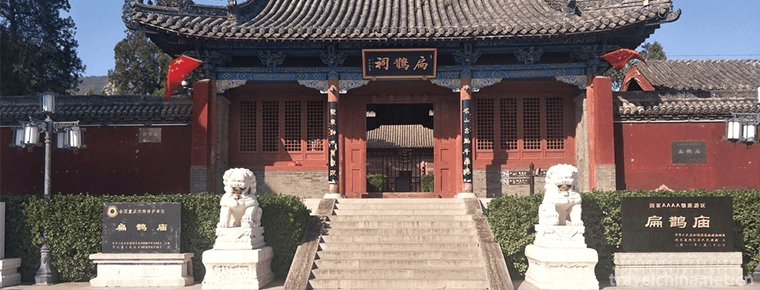
-
Jixi Longchuan Scenic Area
Jixi Longchuan Scenic Area in Xuancheng City, Anhui Province, is a national AAAAA-level Tourism Scenic Area officially approved by the State Tourism Administration.
Views: 142 Time 2018-12-08 -
Shanghai Metropolitan Vegetable Garden
Shanghai Metropolitan Vegetable Garden is located on the Bank of Hangzhou Bay, Bay Town, Fengxian District. It is about 50 kilometers away from the center of Shanghai.
Views: 305 Time 2018-12-19 -
Dang Kou ancient town
Dangkou Ancient Town is located in the southeast of Xishan District, Wuxi City, Jiangsu Province. It is adjacent to the Yue noble tombs and Taibo Tombs in the west, and to Suzhou and Changshu in the e.
Views: 129 Time 2019-01-08 -
Avanti
Avanti, also translated by the Albanian side, (Uygur "Mr." means, Arabic: Juha or Nazar Ding), is a person active in Islamic nationalities from Morocco in the west to Xinjiang in China..
Views: 141 Time 2019-03-28 -
Ansai waist drum
Ansai waist drum is a traditional folk dance in Shaanxi Province. Performances can be performed by several people or thousands of people together, magnificent momentum, exquisite performance is intoxi.
Views: 230 Time 2019-03-31 -
Chaomong Ancient Bow String Music
Originated in Inner Mongolia grassland, Chaoer art, known as "cultural diamond", is the predecessor of horsehead art and the unique traditional and ancient musical instrument of Mongolian..
Views: 93 Time 2019-04-16 -
Hunan fishing drum
Fishing drum is also called tube and bamboo piano. Song Dynasty has emerged, is a popular traditional musical instrument in Hubei, Hunan, Shandong, Guangxi and other areas, often used in opera perform.
Views: 178 Time 2019-05-03 -
Mongolian Medicine
Mongolian medicine is mainly moxibustion, and is good at using fire needles. Fire needle is a method of treating diseases by rapidly puncturing the acupoints with red-hot needle tips. This method has .
Views: 307 Time 2019-06-04 -
Soviet Opera
Su Opera is a combination of Huagu Tanhuang, Nanci and Kunqu Opera. It is popular in the urban and rural areas of southern Jiangsu and Northern Zhejiang. Its predecessor, Sutan, was originally called .
Views: 72 Time 2019-06-16 -
Childrens play
Tongzi Opera is a form of performance in folk prayer activities in Jiangsu Province. It is popular in Nantong City of Jiangsu Province and in the central and western parts of Tongzhou City and its sur.
Views: 195 Time 2019-06-23 -
Xinjiang Opera
Xinjiang Opera, commonly known as "Xinjiang Xiaoqu", is a kind of local opera with unique style, which has been gradually formed and perfected after Shaanxi Opera, Qinghai Pingxian Opera, La.
Views: 80 Time 2019-07-06 -
Chengdu Sport University
Chengdu Institute of Physical Education is one of the six institutes directly under the former State General Administration of Sports. It is now a co-established Institute in Sichuan Province with the.
Views: 214 Time 2019-08-31
